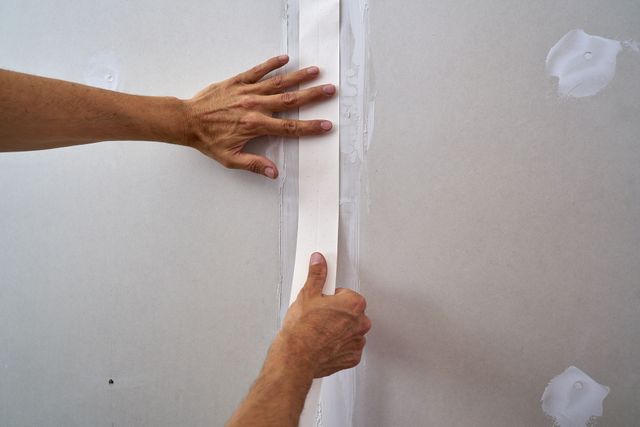Partner with experienced drywall contractors to achieve flawless results in every Interior Painting project.
A Comprehensive Overview to Learning Drywall Repair Work and Installation
This guide uses a detailed expedition of drywall repair service and setup, satisfying both newbies and seasoned specialists. It details important tools, strategies for patching and hanging sheets, and the important finishing procedures. drywall contractors. By understanding typical risks, people can achieve polished results. Understanding these skills not just enhances one's home but additionally builds confidence in DIY ventures. What foundational suggestions will assure an effective project from beginning to end up?
Necessary Tools for Drywall Fixing and Installation
When starting on drywall repair service and installment, a few vital devices can significantly improve the effectiveness and high quality of the work. A drywall knife, commonly readily available in various dimensions, is important for applying joint substance and smoothing seams. A taping knife is also essential for feathering sides and making certain a seamless surface. Furthermore, a drywall saw or energy knife enables precise cutting of drywall sheets to fit any area.

Step-by-Step Guide to Patching Holes
Covering holes in drywall is a straightforward procedure that can bring back the wall surface's look and honesty. To start, the area around the hole ought to be cleansed and any loosened particles eliminated. For little holes, a basic spackle or joint substance can be applied with a putty knife. Bigger openings might require a spot; a piece of drywall can be reduced to fit the opening, secured with adhesive or screws, and after that taped around the edges. When the spot remains in place, joint substance is used over the spot and feathery out to blend with the bordering wall surface. After the compound dries, sanding is needed to attain a smooth coating. Lastly, the fixed area can be primed and repainted to match the remainder of the wall surface. This method guarantees a seamless repair work, improving the overall look of the drywall and preserving its structural honesty.
Techniques for Hanging Drywall Sheets
After efficiently fixing holes in drywall, the next step involves hanging new drywall sheets to create a smooth surface. To achieve this, one should begin by measuring the wall surface room precisely and reducing the drywall sheets to fit. It is important to hang the sheets flat for much better structural honesty, beginning with the top and working downwards.
Using a drywall lift can simplify the process, particularly for ceiling installments. Once positioned, securing the sheets with drywall screws at periods of regarding 12 inches along the sides and 16 inches in the field is vital. This assures a firm hold and lowers the risk of drooping. For edges, the sheets ought to be cut to fit well, enabling for cleaner joints. Lastly, it is advisable to stagger the joints between sheets to strengthen the overall framework, creating a more resilient surface ready for the next stage in the drywall installment procedure.
Completing Touches: Taping and Mudding
Completing the drywall installment entails the vital actions of taping and mudding, which guarantee a refined and smooth finish. Insulation requires the application of joint tape over the seams in between drywall sheets. Interior Painting. This tape can be either paper or fiberglass mesh, with each kind offering unique benefits. After taping, the following action is mudding, where joint compound, or "mud," is put on cover the tape and fill any flaws
Making use of a drywall knife, the substance should be spread out evenly, making sure a feathered edge to decrease visible modifications. Numerous layers are often essential, with sanding in between each layer to accomplish a smooth surface. Mindful attention during this process is crucial, as it significantly affects the last appearance of the use this link wall. With the right technique and persistence, the end outcome will be a perfect foundation ready for painting or finishing touches.
Common Errors to Stay Clear Of in Drywall Projects

An additional typical error is not allowing sufficient drying time between coats, which can catch wetness and compromise the finish. Neglecting to feather the edges properly can produce noticeable lines and flaws. Ultimately, missing sanding or using incorrect methods might leave harsh spots. By recognizing these challenges, people can greatly boost the high quality of their drywall tasks and attain a professional-looking finish.
Regularly Asked Questions
Can I Repair Drywall Without Specialist Aid?
Yes, one can repair drywall without expert aid. With the right devices, materials, and guidance, people can efficiently take care of minor repair services. Substantial damages may require specialist competence for excellent results and sturdiness.
For How Long Does Drywall Compound Require To Dry?
Drywall substance usually takes in between 24 to two days to completely dry entirely, depending upon factors such as moisture and temperature. Thinner layers might dry out faster, while thicker applications call for even more time for ideal results.
What's the Best Kind of Paint for Drywall?
The finest kind of paint for drywall is generally a water-based latex paint. It gives outstanding protection, resilience, and convenience of application, making it perfect for indoor wall surfaces while permitting for very easy cleaning with soap and water.

Just how Do I Protect Against Mold on Drywall?
To stop mold on drywall, warranty correct official site ventilation, control humidity levels, make use of mold-resistant materials, and immediately resolve any leakages. Routine examinations and prompt remediation of water damage are index also essential for long-term avoidance.
Is Drywall Recyclable After Elimination?
Drywall is recyclable after removal, provided it is devoid of impurities like mold and mildew, paint, or various other harmful materials. Reusing facilities can process it into new items, advertising sustainability and lowering garbage dump waste in construction.
When beginning on drywall repair service and setup, a few essential devices can greatly enhance the performance and high quality of the job. After efficiently fixing holes in drywall, the next step involves hanging brand-new drywall sheets to create a smooth surface. Finishing the drywall setup includes the crucial steps of mudding and taping, which guarantee a polished and smooth finish. Attaining a polished finish in drywall projects can be challenging, and several common errors can weaken the high quality of the job. Yes, one can repair drywall without professional help.